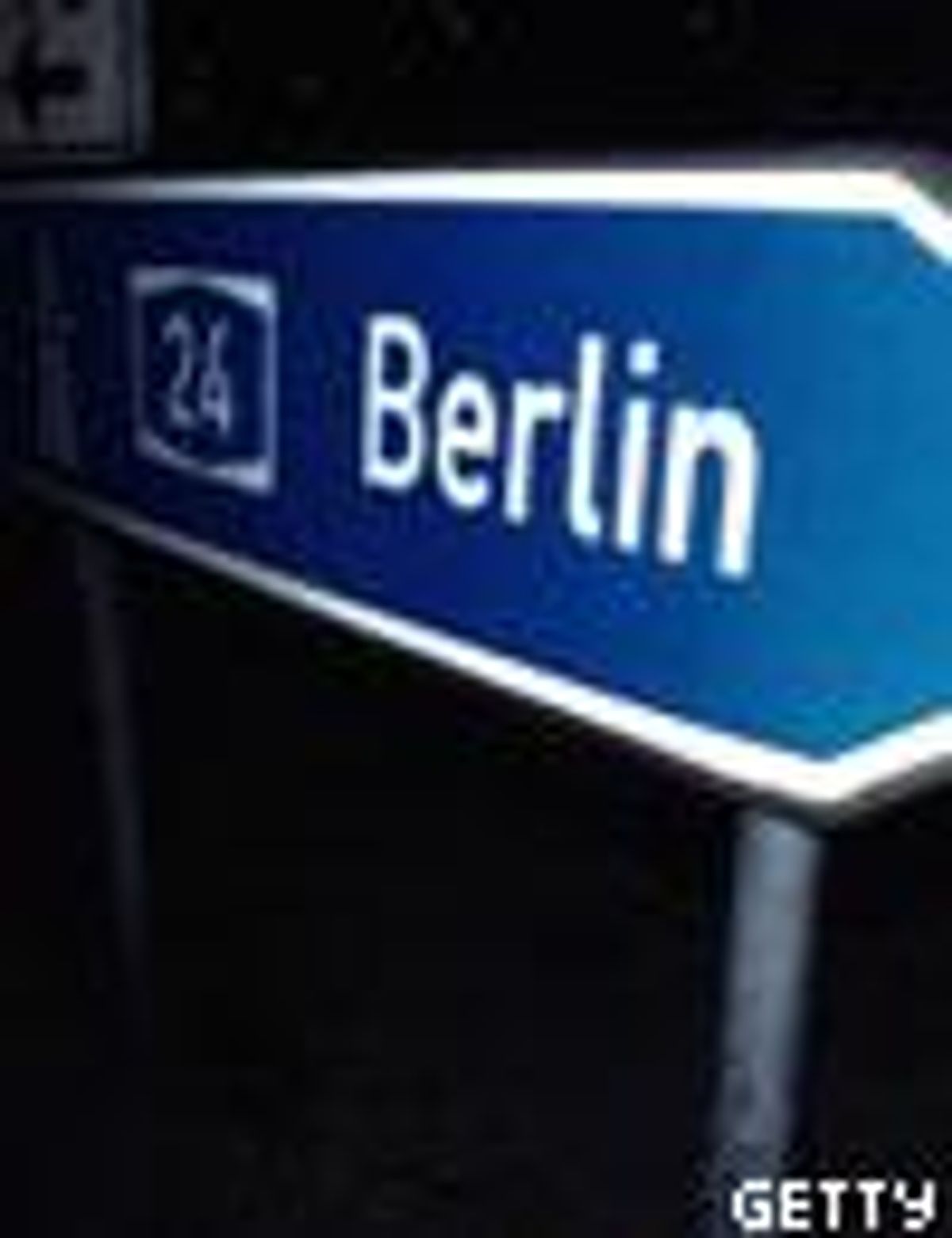Berlin's equally
thriving high and underground arts cultures, its
unpretentious and easy sexuality, and its openly gay mayor
-- a sign of the progressive climate as much as he is
a force for it -- are powerfully matched by a cost of
living in Euros that miraculously competes with the
Dollar.
Tips: Getting Around
About eight times the size of Paris, it's not a
terribly good idea to try getting around Berlin
entirely on foot. Thankfully, there is a stellar metro
system and an intricate, yet intuitive series of buses.
At 7-10 euros a
day or 50 euros a week, your feet will thank you for
renting a bike from one of the shops populating most
corners. If it's more your speed, weekly metro/bus
passes are also available for about 27 euros each -- a
steal with a ticket each way costing around 2 euros.
Tricks: Darkrooms and Dancing Bears Like scenes
out of Liza Minelli's Weimar-inspired Cabaret, the gay bars
Barbie Deinhoff's (Schlesischestrasse 16) and
Roses's (Oranienstrasse 187) drip with kitsch
accessories like pink shag walls, vinyl couches, and
oversized disco balls. A good mix of ex-pats and
locals toasts here over powerful drinks every night of the
week.
A rite of passage
for anyone new to the city, Berghain (Wrietzener Bahnhof, near the
Ostbahnhof; Saturdays; 12 euros) is a heavily queer
event located on the border between the Kreuzberg and
Friedrichshain -- hence "Berg + hain" -- neighborhoods
in East Berlin. Revelers famously stomp out it to techno
and house from midnight on Saturdays until mid-afternoon
Sundays at this massive concrete former power plant
with couches for naps in the lobby, a labyrinthine
darkroom in the back, and breakfast served in its garden.
Wednesdays find
bears, otters, and cubs at Moebel-Olfe (Reichenbergerstrasse
177), and the monthly gay Turkish dance party Gayhane
at SO36
(Oranienstrasse 190; 6 Euro) is legendary.
Warning:
darkrooms are a common addition in Berlin's gay clubs!
Tips: Ich Bin Ein Berliner
After JFK famously misspoke these words in West
Berlin in 1963, the rumor goes, calling himself a
local jelly donut instead of saying "I am a Berliner"
(Ich bin Berliner), this phrase has become something of a
city joke. That said, there is great food in Berlin, even if
travelers have to wade past the
potatoes-and-cream-laden local cuisine to get there.
A staple in the
city's diet, the Imbiss (roughly, fast street food)
serves up clean, tasty, inexpensive and, thanks to sizeable
Turkish and African immigrant populations, diverse
treats all day and night. Fresh, meal-sized doner
kebabs, pizza, currywurst, and Chinese food can be found
on any corner for less than 5 euros.
For a special
treat, try Nil (Grunbergerstrasse 52; 2-4
euros), which serves up Sudanese falafel and grilled
chicken sandwiches laden with fried cheese or dripping
with a fresh peanut sauce that is deceptively light
for its body.
A few blocks away
along Oranienstrasse (one block above the Kottbusser
Tor metro stop), Sunday brunch pulls everyone onto sidewalk
cafes for multi-course cheese and meat platters
and deep Milchkaffees (like a latte), filling the
Kreuzberg street with French, English, Spain, Italian,
and German chatter until well past 4 p.m.
For the
thoroughly unique experience of eating blind, try the
upscale Unsicht-bar (Gormannstrasse 14;
030-24-34-25-00; Closed Mondays, Tuesdays; 40 euros+).
Order from six set menus that list impressions, riddles, and
metaphors like "recipe of a wheat produce passed down by
Japanese monks" or go for the Surprise Menu before
dining in pitch darkness with enhanced other senses.
You'll discover what you ate after paying the bill.
Reservations recommended.


















































































Here's our dream all-queer cast for 'The White Lotus' season 4